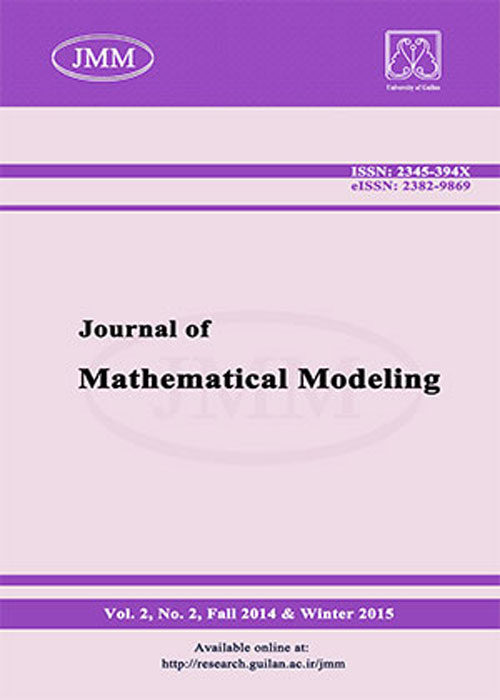فهرست مطالب

Journal of Mathematical Modeling
Volume:7 Issue: 2, Spring 2019
- تاریخ انتشار: 1398/03/11
- تعداد عناوین: 6
-
Pages 153-174Consider an $M/M/1$ queueing system with service interruption. If the server is busy at the arrival epoch, the arriving customer decides to join the queue with probability $q$ and balk with probability $1-q$. The service is assumed to get interrupted according to a Poisson process. The interrupted service is either resumed or restarted according to the realization of two competing independent, non-identically distributed random variables, the realization times of which follow exponential distributions. An arriving customer, finding the server under interruption does not join the system. We analyze the Nash equilibrium customers' joining strategies and give some numerical examples.Keywords: joining strategy, interruption, repeat or resumption of service, Nash equilibrium
-
Interplay of resource distributions and diffusion strategies for spatially heterogeneous populationsPages 175-198In this paper, we consider a reaction-diffusion competition model describing the interactions between two species in a heterogeneous environment. Specifically, we study the impact of diffusion strategies on the outcome of competition between two populations while the species are distributed according to their respective carrying capacities. The two species differ in the diffusion strategies they employ as well as in their asymmetric growth intensities. In case of weak competition, both populations manage to coexist and there is an ideal free pair. If the resources are shared partially then one species emerge as the sole winner and the other goes extinct. The results have been verified and illustrated numerically.Keywords: Resource distributions, adopted dynamics, competition, global analysis, asymptotic stability
-
Pages 199-220In this article, a method by partial eigenvalue assignment for stabilization of descriptor fractional discrete-time linear system is presented. This system can be converted to standard descriptor system by definition of fractional-order derivative and considering a new state vector. Using forward and propositional state feedback we do not need to have a full rank open-loop matrix in this kind of systems. However, only a part of the open-loop spectrum which are not in stability region need to be reassigned while keeping all the other eigenvalues invariant. Using partial eigenvalue assignment, size of matrices are decreased while the stability is preserved. Finally, two methods of partial eigenvalue assignment are compared.Keywords: Descriptor fractional discrete-time linear system, descriptor systems, eigenvalue assignment (EVA), partial eigenvalue assignment (PEVA)
-
Pages 221-229In this paper, we introduce new applicable approximations for Gaussian type integrals. A key ingredient is the approximation of the function $e^{-x^2}$ by the sum of three simple polynomial-exponential functions. Five special Gaussian type integrals are then considered as applications. Approximation of the so-called Voigt error function is investigated.Keywords: Exponential approximation, Gauss integral type function, Voigt error function
-
Pages 231-250In the present paper, we have used moving least squares (MLS) method to solve the integral form of the Emden-Fowler equations with initial conditions. The Volterra integral form of the Emden-Fowler equations overcomes their singular behavior at $x=0$, and the MLS method leads to a satisfactory solution for the equation. The convergence of the method is investigated and finally its applicability is displayed through numerical examples.Keywords: Emden-Fowler equations, Volterra integral equation, moving least squares method
-
Pages 251-261In this paper, we give a necessary and sufficient condition for the powers of an interval matrix to be nilpotent. We show an interval matrix $it{bf{A}}$ is nilpotent if and only if $ rho(mathscr{B})=0 $, where $mathop{mathscr{B}} $ is a point matrix, introduced by Mayer (Linear Algebra Appl. 58 (1984) 201-216), constructed by the $ (*) $ property. We observed that the spectral radius, determinant, and trace of a nilpotent interval matrix equal zero but in general its converse is not true. Some properties of nonnegative nilpotent interval matrices are derived. We also show that an irreducible interval matrix $bf{A}$ is nilpotent if and only if $ | bf{A} | $ is nilpotent.Keywords: Interval matrix, nilpotent matrix, spectral radius

